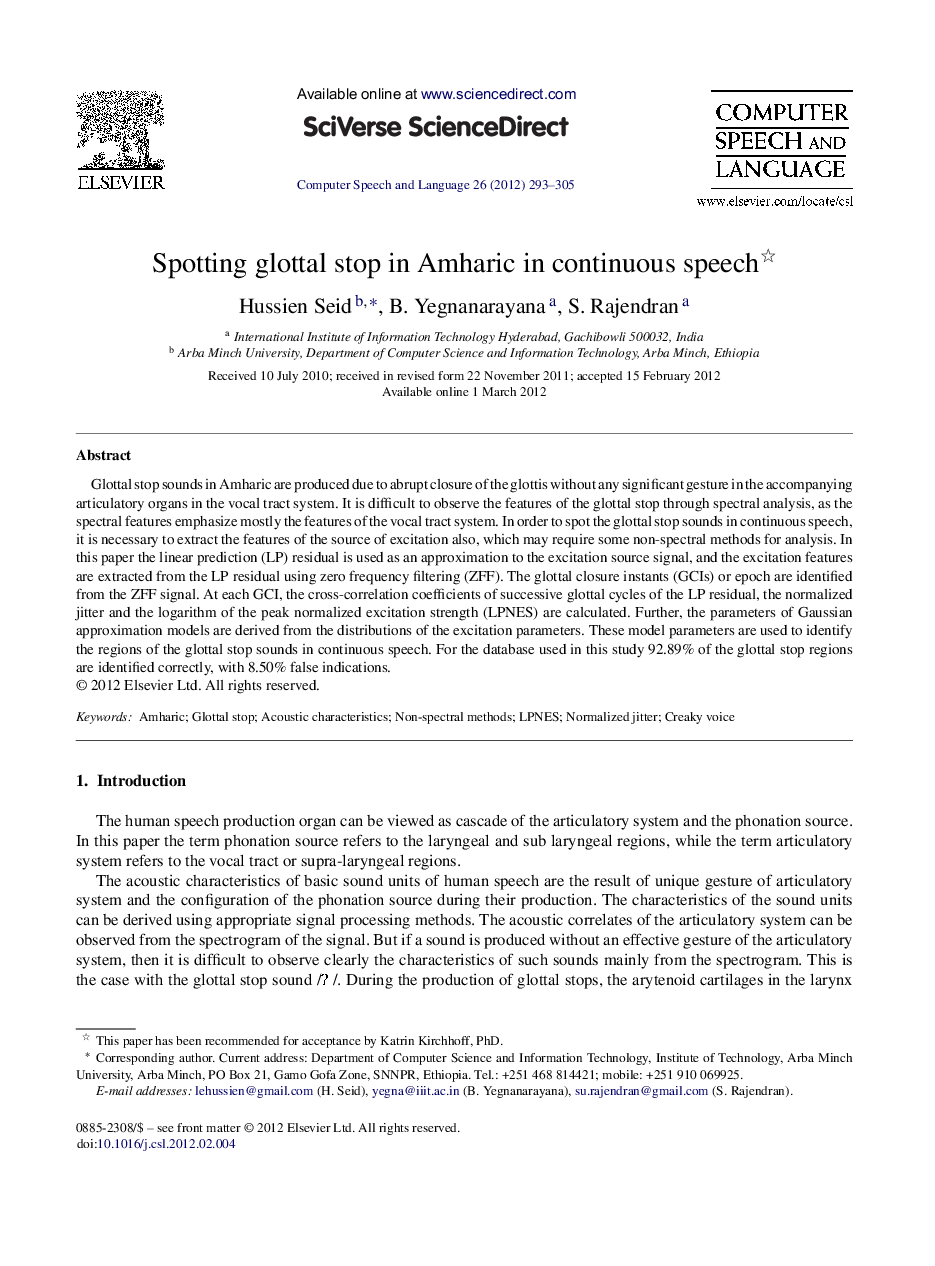| کد مقاله | کد نشریه | سال انتشار | مقاله انگلیسی | نسخه تمام متن |
|---|---|---|---|---|
| 558472 | 874934 | 2012 | 13 صفحه PDF | دانلود رایگان |

Glottal stop sounds in Amharic are produced due to abrupt closure of the glottis without any significant gesture in the accompanying articulatory organs in the vocal tract system. It is difficult to observe the features of the glottal stop through spectral analysis, as the spectral features emphasize mostly the features of the vocal tract system. In order to spot the glottal stop sounds in continuous speech, it is necessary to extract the features of the source of excitation also, which may require some non-spectral methods for analysis. In this paper the linear prediction (LP) residual is used as an approximation to the excitation source signal, and the excitation features are extracted from the LP residual using zero frequency filtering (ZFF). The glottal closure instants (GCIs) or epoch are identified from the ZFF signal. At each GCI, the cross-correlation coefficients of successive glottal cycles of the LP residual, the normalized jitter and the logarithm of the peak normalized excitation strength (LPNES) are calculated. Further, the parameters of Gaussian approximation models are derived from the distributions of the excitation parameters. These model parameters are used to identify the regions of the glottal stop sounds in continuous speech. For the database used in this study 92.89% of the glottal stop regions are identified correctly, with 8.50% false indications.
► The realization of glottal stop sounds in Amharic is analyzed.
► Linguistic rules are developed to spot glottal stop from continuous speech.
► Source related features are extracted from voiced regions.
► Bayesian classifier is used to spot them.
Journal: Computer Speech & Language - Volume 26, Issue 4, August 2012, Pages 293–305